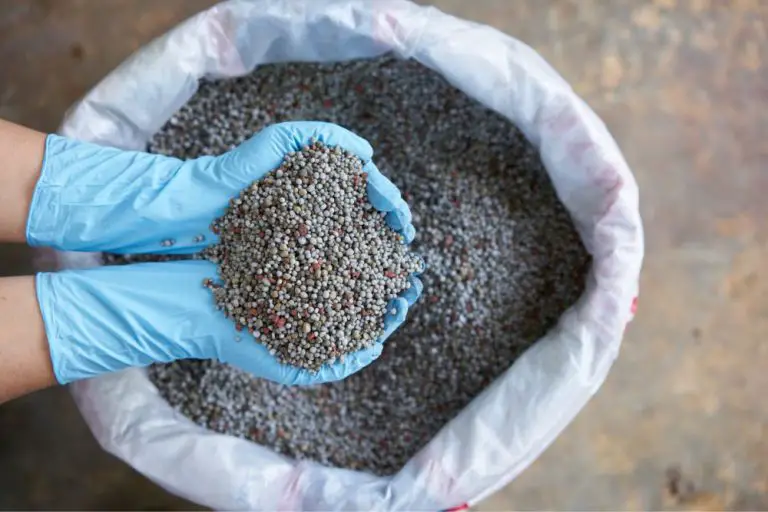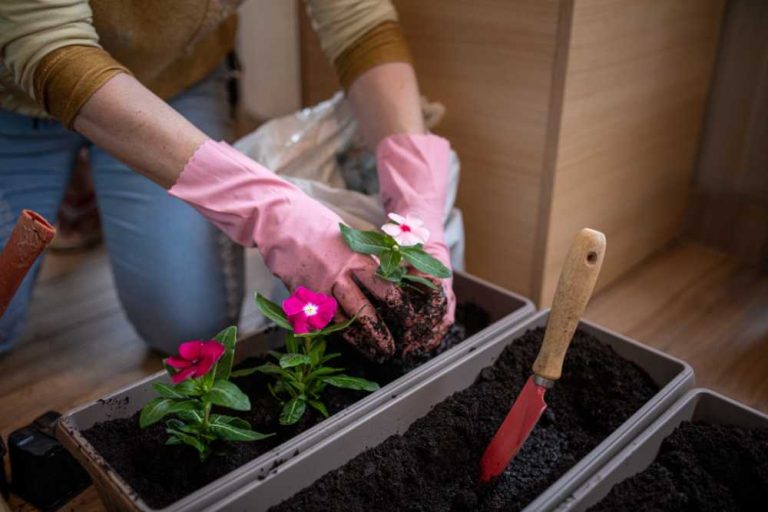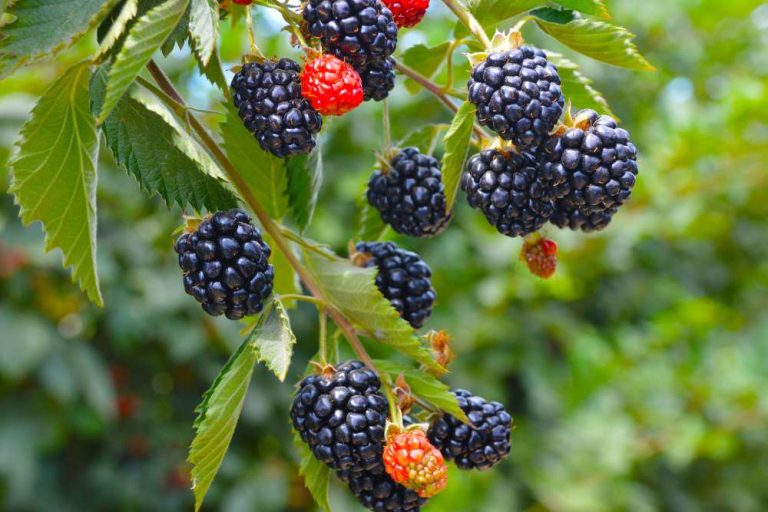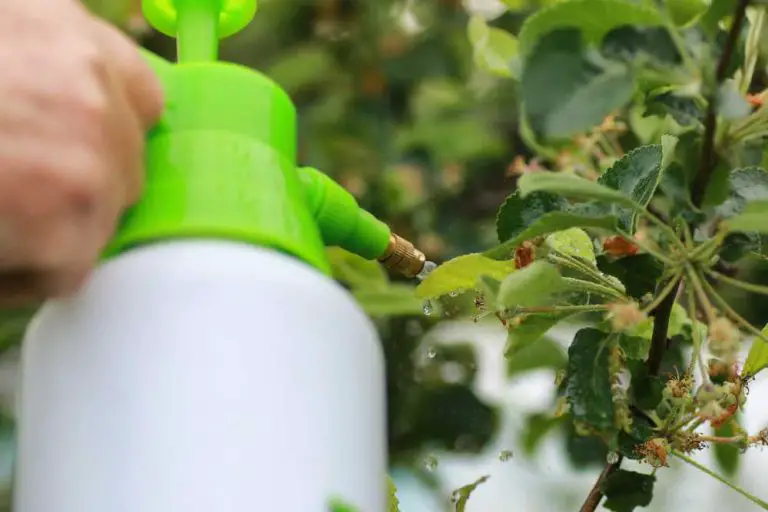8 Best Fertilizer for Tomatoes and Cucumbers – Ultimate Guide
Cucumbers are healthy and simple to grow. Every vegetable garden should have at least one cucumber vine. If you have a cucumber garden, you may be wondering, “What is the best cucumber fertilizer? Choosing the appropriate fertilizer for your cucumbers might be challenging.
Homegrown tomatoes are the best kind of products to grow in a backyard garden, and they aren’t just a coincidence. To produce tomatoes successfully, a healthy combination of dedication, patience, sunlight, and soil fertility is required.
Plant nutrition, in fact, is one of the key contributors to tomato flavor and quality. You’ll need the best tomato fertilizer if you want a successful harvest of tomatoes. We have picked the eight best fertilizer for tomatoes and cucumbers, so you know what to use and when.
When choosing the ideal fertilizer for your tomato and cucumber garden, it’s helpful to have a clear, side-by-side comparison of the top options available. This comparison table provides a quick overview of the key features of each fertilizer, making it easier for you to decide which one best suits your gardening needs.
| Fertilizer Name | Type | NPK Ratio | Key Ingredients | Best For | Additional Features |
|---|---|---|---|---|---|
| 1. Espoma Garden-Tone Plant Food | Organic Granular | 3-4-4 | Poultry manure, Bone meal, Feather meal | Overall growth and fruit production | Biotone technology, No fillers or sludge |
| 2. Miracle-Gro Nature’s Care Organic Plant Food | Organic Granular | 7-6-9 | Natural ingredients, Calcium | Quick growth & yield improvement | Slow release, Safe for children and pets |
| 3. Jobe’s 09026NA Plant Food Vegetables & Tomato | Organic Granular | 2-5-3 | Biozome, Healthy bacteria | Resistance to pests and diseases | Feeds up to 6 weeks, Affordable |
| 4. Dr. Earth Home Grown Fertilizer | Organic Granular | 4-6-3 | Human and feed-grade ingredients | Enhancing soil health | Non-GMO, Safe for people and pets |
| 5. Jobe’s Tomato Fertilizer Spikes | Spike | 6-18-6 | Pre-measured nutrients | Ease of use, Mess-free application | Slow-release, Suitable for various garden types |
| 6. Greenway Biotech Tomato Fertilizer | Water-soluble | 4-18-38 | Micronutrients, No heavy metals | Hydroponic systems, Foliar feeding | Produces 1,000 gallons of liquid fertilizer |
| 7. FoxFarm Big Bloom Liquid Concentrate | Liquid | 0-0.5-0.7 | Bat guano, Earthworm castings | Bloom stimulation, Flavor enhancement | Organic, Suitable for soil and hydroponics |
| 8. Lilly Miller Morcrop Tomato & Vegetable Food | Granular | 5-10-10 | Multiple nitrogen sources | Low-nitrogen requiring plants | Feeds for 6 weeks, Rare and unique |
| 9. Element Nutrients Flower Fuel | Water-soluble Powder | 1-34-32 | Various vitamins, nutrients, minerals | Blossom production, Heavy harvests | Suitable for hydroponics, Quick dissolution |
Guide to Choosing the Best Fertilizer:
Pros and Cons: Evaluating the Top Fertilizers for Tomatoes and Cucumbers
When it comes to nurturing a thriving vegetable garden, selecting the right fertilizer is crucial. While the previous sections have introduced you to various options and provided a detailed comparison, it’s important to weigh the pros and cons of each fertilizer to make an informed decision. Let’s dive into the advantages and disadvantages of the top fertilizers for tomatoes and cucumbers.
1. Espoma Garden-Tone Plant Food
- Pros:
- Organic Composition: Safe for the environment and promotes healthy soil biology.
- Slow-Release Formula: Provides a steady supply of nutrients over time, reducing the risk of over-fertilization.
- Contains Biotone Technology: Enhances plant growth and root development.
- Cons:
- Lower NPK Ratio: May not be sufficient for plants requiring high nutrient levels.
- Price: Slightly more expensive than some synthetic alternatives.
2. Miracle-Gro Nature’s Care Organic
- Pros:
- High NPK Content: Suitable for fast-growing plants.
- Fortified with Calcium: Essential for preventing blossom end rot in tomatoes and cucumbers.
- Widely Available: Easy to find in most garden centers and online.
- Cons:
- Frequent Application Required: Needs to be reapplied every two months.
- Not Suitable for Hydroponics: Specifically formulated for soil use.
3. Jobe’s 09026NA Plant Food
- Pros:
- Affordable: Good value for money.
- Contains Jobe’s Biozome: Improves soil conditions and resists disease.
- Organic: Environmentally friendly and safe for edible plants.
- Cons:
- Lower Phosphorus and Potassium: Might require additional supplementation for flowering and fruiting.
4. Dr. Earth Home Grown Fertilizer
- Pros:
- OMRI Listed: Certified organic and non-GMO.
- Versatile Application: Can be used for various stages of plant growth.
- Human and Feed-Grade Ingredients: Ensures high-quality and safe composition.
- Cons:
- Odor: Some users may find the natural odor unpleasant.
- Cost: More expensive than some conventional fertilizers.
5. Jobe’s Tomato Fertilizer Spikes
- Pros:
- Easy to Use: Simply insert spikes near the plant roots.
- Slow-Release: Nutrients are delivered gradually over time.
- No Mess: Cleaner application than granular or liquid fertilizers.
- Cons:
- Limited Reach: Nutrients may not spread as evenly as with granular or liquid types.
- Fixed Formula: Not customizable to specific plant needs.
6. Greenway Biotech Tomato Fertilizer
- Pros:
- Highly Concentrated: Ideal for nutrient-demanding stages.
- Great for Hydroponics: Specially formulated for water-based systems.
- Contains Micronutrients: Ensures a balanced nutritional profile.
- Cons:
- Requires Additional Components: Needs calcium nitrate and Epsom salt for a complete nutrient mix.
- Mixing Required: More labor-intensive than ready-to-use options.
7. FoxFarm Big Bloom Liquid Concentrate
- Pros:
- Organic Ingredients: Promotes natural growth and soil health.
- Enhances Flavor and Aroma: Ideal for those growing for culinary uses.
- Improves Soil Quality: Beneficial for long-term garden health.
- Cons:
- Lower NPK Values: May need to be supplemented with additional nutrients.
- Regular Application Needed: More frequent use than some slow-release formulas.
8. Lilly Miller Morcrop Tomato & Vegetable Food
- Pros:
- Balanced NPK for Vegetables: Tailored for tomatoes and cucumbers.
- Easy to Apply: Granular form that is simple to spread.
- Wide Availability: Easily found in stores and online.
- Cons:
- Non-Organic: May not be suitable for organic gardening enthusiasts.
- Potential Overuse Risk: Higher NPK ratios can lead to over-fertilization if not carefully managed.
Organic vs. Synthetic Fertilizers: A Comprehensive Discussion
The debate between organic and synthetic fertilizers is a longstanding one, especially among gardeners dedicated to growing vegetables like tomatoes and cucumbers. This discussion is pivotal in understanding the impact of each type on plant health, soil quality, and the environment. Here, we delve into the core aspects of organic and synthetic fertilizers, helping you make an informed decision tailored to your gardening needs.
Definition and Composition
- Organic Fertilizers: These are derived from natural sources such as plant, animal, or mineral matter. Examples include bone meal, compost, manure, and seaweed extracts. They release nutrients slowly as they break down in the soil, providing a sustained feed to plants.
- Synthetic Fertilizers: Also known as chemical or inorganic fertilizers, they are manufactured from synthetic compounds. These typically have a higher concentration of the essential nutrients – nitrogen (N), phosphorus (P), and potassium (K). They are designed to offer a quick release of nutrients into the soil.
Nutrient Availability and Release Rate
- Organic Fertilizers: They generally have lower NPK values compared to synthetics. The nutrients are released slowly over time as the organic matter decomposes, which reduces the risk of nutrient leeching and over-fertilization. This slow-release mechanism promotes steady, healthy growth of tomatoes and cucumbers.
- Synthetic Fertilizers: They provide immediate nutrients to plants, which is particularly beneficial for addressing nutrient deficiencies rapidly. However, this can lead to quicker leaching through the soil, especially in areas with heavy rainfall or irrigation, potentially leading to environmental concerns like waterway pollution.
Soil Health and Environmental Impact
- Organic Fertilizers: These enhance soil structure, increase water retention, and encourage the proliferation of beneficial microorganisms. They are environmentally friendly, reduce carbon footprint, and sustain soil fertility in the long term. Organic fertilizers are often the choice for gardeners practicing sustainable and eco-friendly agriculture.
- Synthetic Fertilizers: While highly effective in providing essential nutrients, they do not improve soil structure or microbial diversity. Overuse can lead to soil acidification, decreased fertility, and potential contamination of water sources. They are energy-intensive to produce, contributing to a larger carbon footprint.
Cost and Accessibility
- Organic Fertilizers: They can be more expensive than synthetic alternatives and might be less readily available in some areas. However, many organic materials can be produced at home (like compost), reducing the overall cost.
- Synthetic Fertilizers: Generally more affordable and widely available than organic options. Their uniform composition makes them easier to apply consistently and precisely.
Suitability for Different Growth Stages
- Organic Fertilizers: Ideal for long-term growth and overall plant health. They are particularly beneficial during the establishment and vegetative growth stages of tomatoes and cucumbers.
- Synthetic Fertilizers: Highly effective during the peak growing and fruiting stages, when plants require a rapid and substantial nutrient supply.
1. Espoma Garden-Tone Plant Food
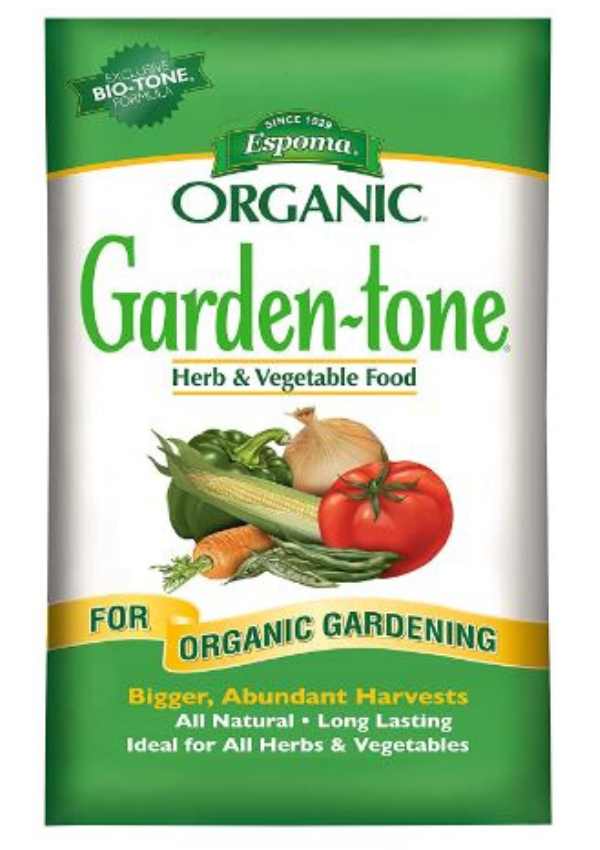
Espoma Garden Tone is a slow-release plant food designed to increase fruit and vegetable production as well as herb production. Espoma’s inexpensive price and superior effectiveness have made it a favorite among organic gardeners.
This fertilizer contains 15 important elements and is supplemented with Biotone technology to improve the soil habitat for beneficial bacteria and microorganisms. It is totally constructed of organic components and does not include any fillers or sludge.
It is derived from: Poultry manure, Bone meal, Feather meal, Alfalfa meal, Greensand Sulfate of Potash Espoma Garden-Tone has additional nutrients such as 5% calcium, 1% magnesium, and 1% humic acid.
Chlorophyll, which helps plants produce photosynthesis, requires magnesium as a necessary component. Calcium, on the other hand, aids in plant cell development for optimal plant growth. A 3-4-4 NPK fertilizer called Garden Tone helps continuously feed your plants throughout the entire month.
Additionally, you can incorporate it into the soil while transplanting seedlings as part of your soil preparation. This fertilizer is often applied near the drip line, which is generally 2 to 3 inches from the stem and contains absorbing roots.
Garden-Tone is a safe organic fertilizer to use around children and pets. It also poses no health risks to gardeners. The only drawback is the strong odor, which is typical with organic fertilizers. Because of its odor, some gardeners advise against applying this fertilizer to indoor plants.
2. Miracle-Gro Nature’s Care Organic & Natural Tomato Plant Food

Miracle-Gro provides an organic product line that caters to the demands of organic gardeners. Your plants will be continuously fed for up to two months with Miracle-Gro Nature’s Care Organic & Natural Tomato, Vegetable & Herb Plant Food, an organic fertilizer with a slow release.
This fertilizer has been developed to promote the quick growth of plants and increase the yield of vegetables and fruits. It has been fortified with calcium to improve the quality of your yield. In order to ensure healthy roots, stems, and foliage, calcium helps plants build their cells.
It’s a 7-6-9 NPK fertilizer that most gardeners love for its ability to help plants recuperate faster after transplanting. It also includes other ingredients including 1.5% sulfur, 5% calcium, and 1% magnesium. Making this fertilizer dissolve in the water is a common error made by beginner gardeners.
It is a slow-release fertilizer designed to gradually liquefy and release nutrients in the soil each time you water your plants over the course of eight weeks.
The only disadvantage that conscientious gardeners may detect is that the exact contents of the fertilizer are not declared. It does, however, have the usual odor of organic fertilizers, which may attract dogs and other animals. Around children and animals, it is safe to use.
3. Jobe’s 09026NA Plant Food Vegetables & Tomato
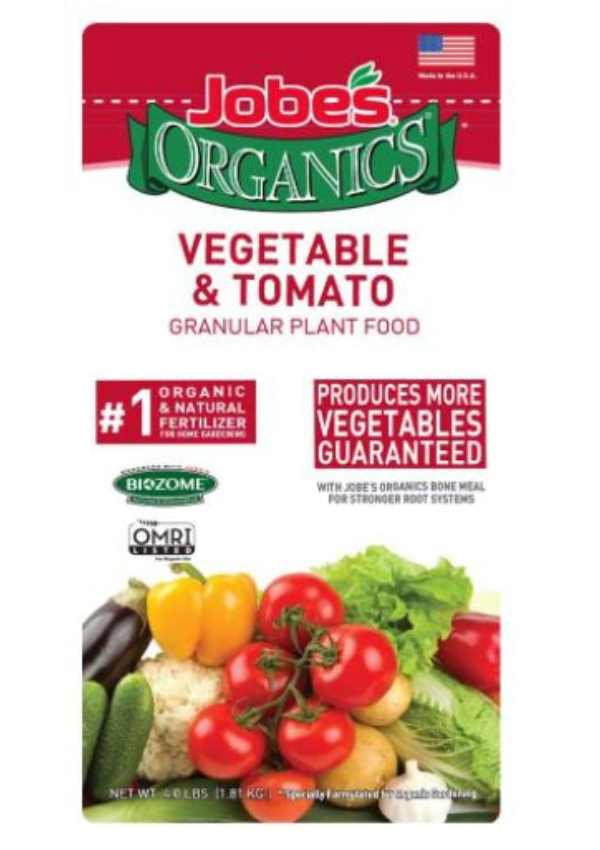
It also contains Jobe’s Biozome, a patented blend of helpful microbes and healthy, mushroom-derived bacteria meant to improve soil quality while assisting plants in resisting insect and disease infestations. Most importantly, it is reasonably priced. Jobe’s Organics Vegetable & Tomato Plant Food is a long-lasting and low-cost fertilizer.
The granules are mixed into the top inch or so of soil, where they slowly dissolve and supply the plants with a steady meal of nutrients for up to six weeks. This organic Jobe’s fertilizer has a 2-5-3 NPK analysis, making it perfect for growing cucumbers.
- Granular fertilizer
- Cucumbers can be fed for up to 6 weeks with natural nutrients
- Beneficial microbes have been added
- Potentially offensive odor
3. Dr. Earth Home Grown Fertilizer

This Dr. Earth tomato, vegetable, and herb fertilizer are packed with many minerals, proteins, carbohydrates, humic acids, and trace elements and is made from premium human and feed-grade components. The fertilizer encourages healthy soil, which aids in the production of high-quality, nutritious veggies at home.
This type of granular organic fertilizer is easy to use and has a long shelf life. Even though Dr. Earth’s is a little more expensive than competing brands, the cost is fair given the high-quality ingredients and beautiful, tasty tomatoes. This fertilizer, manufactured in a sustainable manner in the United States, is included on the Non-GMO Project’s list of verified fertilizers as well as the Organic Material Review Institute’s list of organic gardening fertilizers. 4-6-3 is the NPK ratio.
- Granular type fertilizer
- High-quality human- and feed-grade components
- Smells strongly
- This fertilizer is organic
- Encourages healthy soil
- Non-GMO
- Safe for people and pets
4. Jobe’s Tomato Fertilizer Spikes
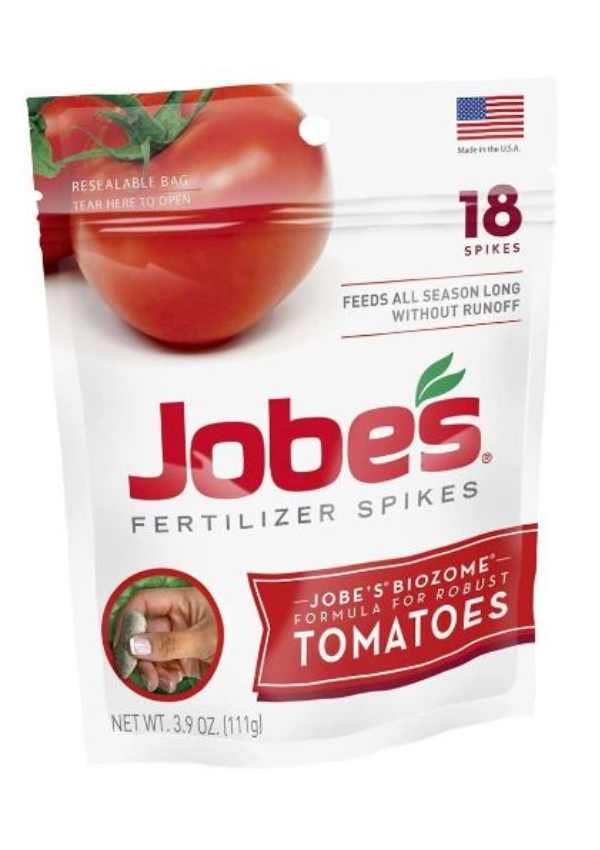
Jobe’s tomato fertilizer spikes reduce the need for granules and liquid fertilizers, saving time and space. Plants can keep their health and vigor for up to 8 weeks by simply putting the spikes into the soil. These fertilizer spikes deliver nutrients underground, where they may be utilized by plant roots. This makes it perfect for in-ground, raised beds, and container gardens.
The slow-release mixture will feed tomato plants for up to eight weeks if the spikes are placed around the plants. In contrast to fertilizers that are put to the surface, nutrients in fertilizer spikes do not wash away as easily. The highly prepared, premeasured spikes allow for quick, easy, and mess-free fertilizing. The NPK is 6-18-6.
- Type: Spikes
- Spikes may be broken or crumbled when they arrive
- This fertilizer is organic.
- Slow-release formula – supply nutrients Continuously
- Mess-free
5. Greenway Biotech Tomato Fertilizer
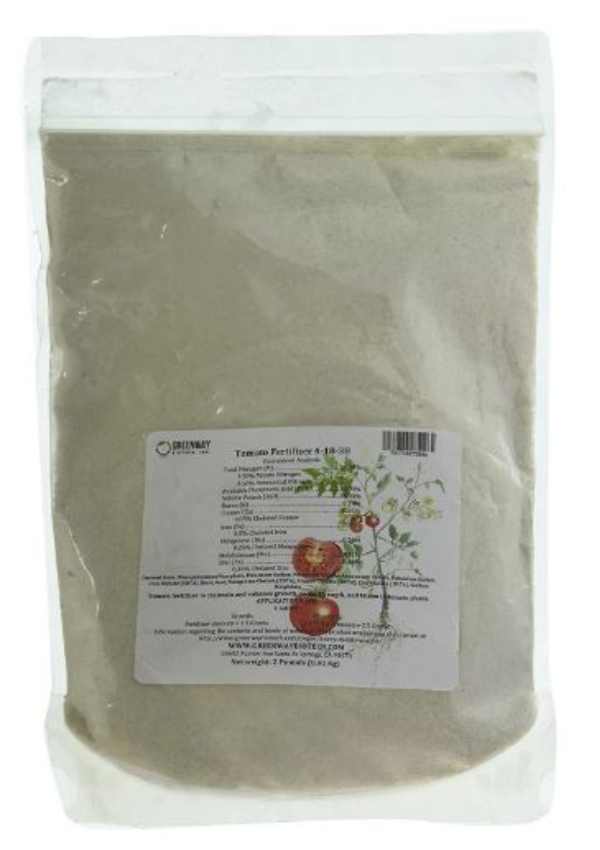
Greenway Biotech Tomato Fertilizer is packaged in a simple box that contains a professional formulation of quality components formulated exclusively for tomatoes. This is an excellent choice for growers that want a water-soluble mix or produce tomatoes hydroponically.
Greenway Biotech Tomato Fertilizer yields 1,000 gallons of liquid fertilizer from five pounds. The product comes with instructions on how to apply it as a foliar fertilizer or as a dry side dress for tomatoes in the garden. There are no toxic substances or heavy metals in this fertilizer. It contains boron, copper, iron, manganese, zinc, and molybdenum, among other micronutrients. The NPK balance is 4-18-38.
- Water-soluble product
- Great for hydroponics
- No heavy metals
- But it needs to add calcium nitrate and Epsom salt
6. FoxFarm Big Bloom Liquid Concentrate
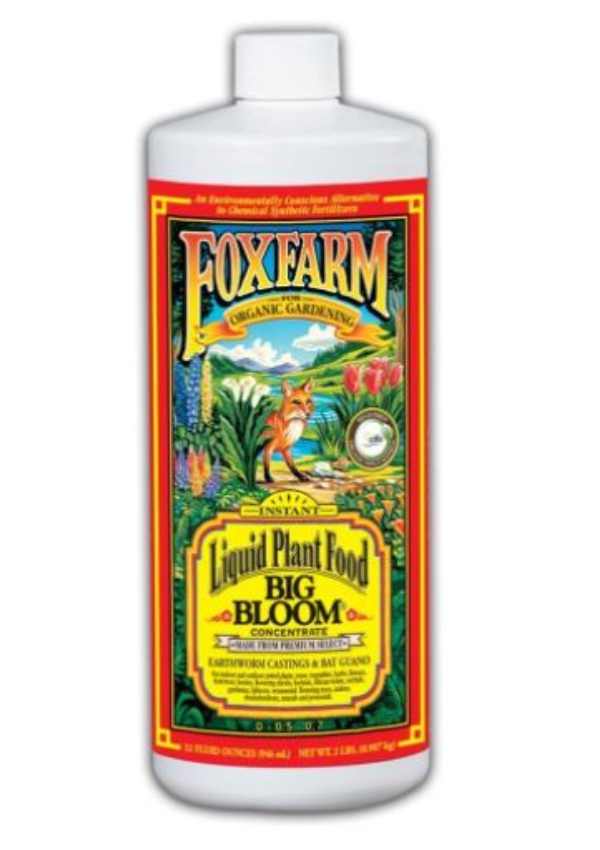
FoxFarm is one of the most successful fertilizer lines in the fertilizer industry. They feature a unique formulation that distinguishes them from the competition while providing remarkable results in plants. One component of their plan is to keep their secret formula hidden from everyone, including gardeners.
FoxFarm Big Bloom Liquid Concentrate is an organic fertilizer designed to stimulate large and plentiful blooms in fruit crops, resulting in increased fruit output. It also helps to raise the quality of your crop by increasing the fruit and vegetable’s flavor and aroma. It is a biologically active 0-0.5-0.7 NPK fertilizer that has been enhanced to increase soil quality.
It is fortified with bat guano and earthworm castings to provide a nutrient-dense soil condition for your cucumbers. Bat guano is used in fertilizers because of its high levels of nitrogen, phosphate, and potassium. It helps to control nematodes in the soil and is also employed as a fungicide. It also causes the soil’s organic matter to break down quickly, which speeds up the absorption of nutrients.
7. Lilly Miller Morcrop Tomato & Vegetable Food
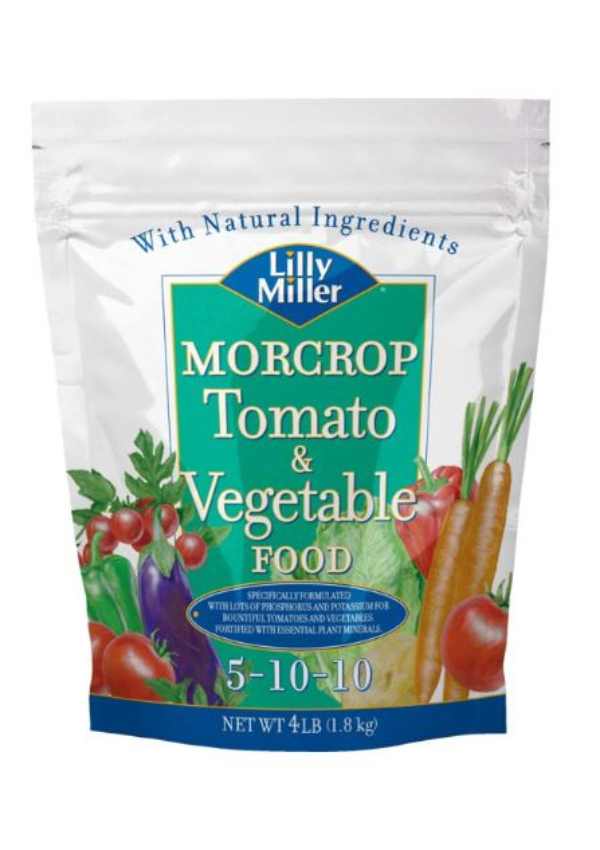
If you want to avoid using conventional fertilizers, you could look into small-scale fertilizer producers. Lilly Miller Morcrop Tomato & Vegetable Food promotes plant health and fruit production despite being rare and unpleasant. This fertilizer is one of the few that has a 5-10-10 NPK ratio composition.
It is a great plant food for cucumbers, tomatoes, carrots, and peppers due to its low nitrogen concentration (due to its low nitrogen requirements). According to the producer, the nitrogen in the product comes from five separate sources and is supplemented with supplementary minerals to promote plant growth.
This fertilizer will also feed your plants constantly for the next six weeks. All you need to do is incorporate it into the top layer of soil and plan to fertilize the plants the following month. While it has been commended for producing fast benefits in plants and for being true to its claims, it can be difficult to find in local retailers.
However, those who have discovered its potential don’t mind looking for it because it has saved their plants’ lives. Another drawback for a conscientious grower is the absence of information regarding the contents. Although most Lilly Miller products are organic, this fertilizer is not OMRI-listed.
- It is suitable for both container and in-ground plants.
- It is already prepared for use and requires no mixing.
8. Element Nutrients Flower Fuel The Best Bloom Booster
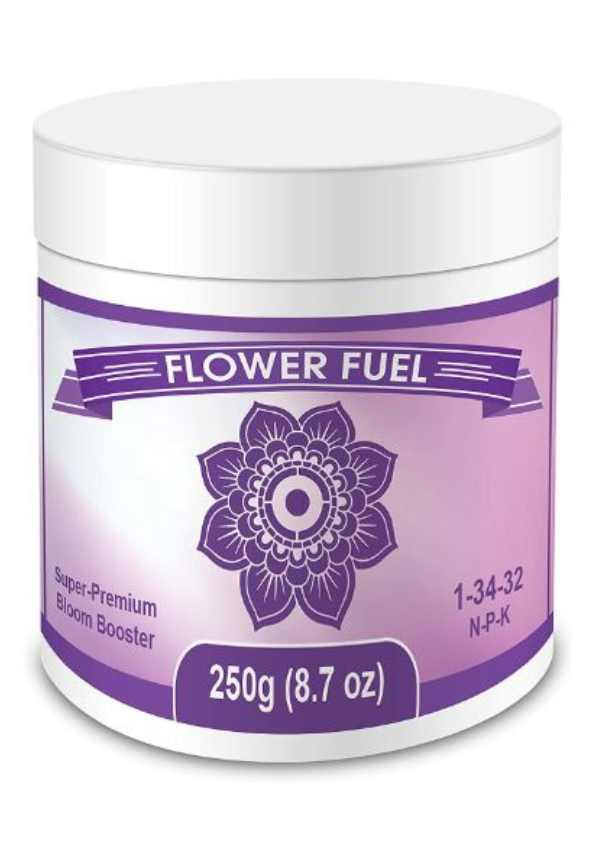
Flower Fuel’s Super-Premium Bloom Booster, which supports maximum blossom production for high cucumber yields, is ideal for gardeners looking for heavy harvests. Flower Fuel is the fertilizer to use as soon as the first flowers bloom on the plant, whether you’re growing cucumbers for farmers markets or sharing with family and friends. Until then, an all-purpose fertilizer is a superior choice for getting the plant started on the right foot.
Flower Fuel has a powerful 1-34-32 NPK analysis that supports blooming and aids in the development of the fruits itself. Instead of producing lots of foliage, this low-nitrogen fertilizer prioritizes the growth of cucumbers.
Various vitamins, nutrients, and minerals are among the more than 40 constituents in the custom blend. It dissolves quickly in water and yields 200 gallons of fertilizer-rich water from a single 8.7-ounce box. It is also suitable for use in hydroponic systems.
- The NPK ratio is 1-34-32
- Nonorganic product
- Powder that dissolves in water
- Produces a lot of flowers and aid in Rich harvests
- In water, it dissolves quickly
- But it is not natural
FAQ
Can I use the same fertilizer for both tomatoes and cucumbers?
Yes, you can generally use the same fertilizer for both tomatoes and cucumbers as they have similar nutrient requirements. A balanced fertilizer with a ratio of N-P-K (Nitrogen, Phosphorus, Potassium) such as 10-10-10 or 5-10-10 is suitable for both. However, it’s important to monitor each plant’s specific needs, as their nutrient demands may vary through different growth stages.
How often should I fertilize my tomatoes and cucumbers?
The frequency of fertilization depends on the type of fertilizer and the growth stage of your plants. For organic fertilizers, which release nutrients slowly, applying once at the beginning of the season and then again mid-season is often sufficient. For synthetic fertilizers, you might need to apply them every 2-4 weeks, following the instructions on the product label.
Are there any signs of over-fertilization I should watch out for?
Yes, over-fertilization can be harmful. Signs include yellowing or browning of leaf tips, stunted growth, wilting, or a white crust of fertilizer residue on the soil surface. If you notice these signs, reduce the frequency and amount of fertilizer you are applying.
Can I make my own organic fertilizer at home?
Absolutely! Compost, made from kitchen scraps and yard waste, is an excellent homemade organic fertilizer. You can also make liquid fertilizers from compost or manure by soaking them in water and using the water for your plants.
Is it better to use granular or liquid fertilizer?
Both granular and liquid fertilizers have their advantages. Granular fertilizers are slow-releasing and provide a steady supply of nutrients over a longer period. Liquid fertilizers are quickly absorbed and are best when your plants need an immediate nutrient boost. Your choice depends on your plants’ current needs and your gardening style.
How do I know if my fertilizer is organic?
Check the label on the fertilizer package. It should indicate whether it is organic and may also have certifications from organic standards organizations. Generally, organic fertilizers are derived from plant, animal, or mineral sources.
Do tomatoes and cucumbers require different pH levels in soil?
Tomatoes and cucumbers thrive in slightly acidic to neutral soil, typically between pH 6.0 and 7.0. It’s always a good idea to test your soil’s pH and adjust accordingly for optimal plant health and nutrient uptake.
Can overuse of synthetic fertilizers impact soil health?
Yes, excessive use of synthetic fertilizers can lead to soil acidification, disrupt microbial life, and reduce soil fertility over time. It’s important to use them according to guidelines and consider incorporating organic matter to maintain soil health.
What is the best time of day to fertilize my garden?
Answer: The best time to apply fertilizer is in the morning or late afternoon to avoid the heat of the day, which can cause fertilizers to evaporate or burn plants. Always water your plants after applying granular fertilizers to help dissolve the nutrients into the soil.
Should I alter my fertilization routine based on the weather?
Yes, your fertilization routine may need to adapt to weather conditions. During periods of heavy rainfall, nutrients can be washed away, requiring more frequent application. In contrast, during drought conditions, reduce the frequency to avoid over-concentration of salts in the soil.
- 29 Bucket Gardening Ideas for a Lush, Compact Garden - October 30, 2024
- 20+ Chic Boho Bedroom Ideas for a Cozy and Stylish Retreat - June 20, 2024
- 12+ Modern Boho Living Room Ideas to Create a Unique Oasis - June 10, 2024



